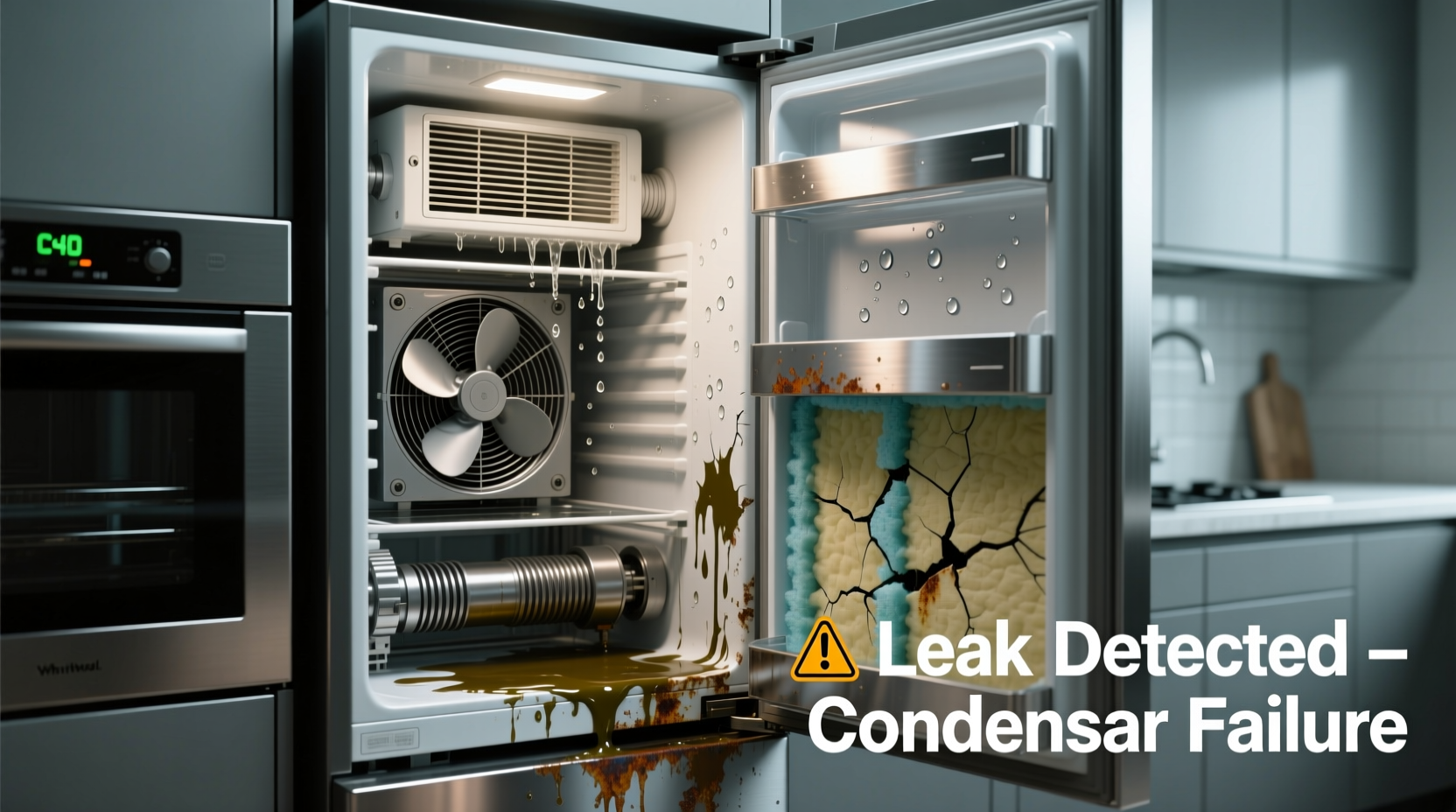A puddle forming at the bottom of your Whirlpool refrigerator is more than just a nuisance—it can damage flooring, promote mold growth, and indicate a deeper mechanical issue. While water inside the fridge might seem like a minor inconvenience, it often points to specific failures in the appliance’s design or maintenance routine. Understanding why this happens and how to address it promptly ensures your refrigerator runs efficiently and safely. This guide breaks down the most frequent causes of internal leaks in Whirlpool refrigerators and provides actionable, long-term solutions.
Common Causes of Internal Leaks in Whirlpool Fridges

Water pooling inside a Whirlpool refrigerator typically stems from one of several system malfunctions. Unlike external leaks, which may originate from the water supply line or ice maker, internal leaks are usually tied to the defrost or drainage systems. Identifying the root cause is essential before attempting repairs.
- Clogged Defrost Drain: The most frequent culprit. Over time, food particles, ice, or mold can block the drain tube, preventing melted frost from escaping.
- Frozen Drain Tube: If the defrost cycle isn’t functioning correctly, moisture can refreeze in the drain, creating an ice dam.
- Improper Leveling: A fridge that isn’t level can cause condensation to pool toward the front instead of draining properly.
- Door Seal Failure: Worn or dirty gaskets allow warm, humid air to enter, increasing condensation that turns to water.
- Overuse of Ice Maker or Water Dispenser: Internal spills from dispensers or overfilled ice trays can mimic leak symptoms.
Step-by-Step Guide to Diagnose and Fix the Leak
Resolving an internal leak requires methodical troubleshooting. Follow this timeline to identify and correct the issue:
- Empty the Fridge: Remove all food and shelves for better access.
- Locate the Drain Hole: In most Whirlpool models, it's behind the rear wall in the freezer compartment. Look for visible ice or debris.
- Check for Ice Blockage: Use a hairdryer on low heat to gently melt any ice in the drain area. Avoid sharp tools that could puncture the tube.
- Flush the Drain Tube: Attach a turkey baster or syringe filled with warm water to the drain opening. Flush until water flows freely into the drip pan below.
- Inspect the Drip Pan: Located near the compressor at the back, ensure it’s not cracked or overflowing. Clean it with soapy water if needed.
- Test the Defrost Heater (if applicable): Use a multimeter to check continuity. No reading means the heater is faulty and needs replacement.
- Re-level the Appliance: Adjust the front legs using a wrench until the fridge is slightly tilted backward (¼ inch), guiding water toward the drain.
Do’s and Don’ts When Handling Refrigerator Leaks
| Do’s | Don’ts |
|---|---|
| Unplug the unit before inspection | Use boiling water to clear the drain (can crack plastic) |
| Clean the drain monthly during peak use | Ignore recurring leaks—underlying issues worsen over time |
| Wipe door gaskets weekly with mild soap | Overload the fridge, blocking airflow and increasing humidity |
| Replace damaged gaskets immediately | Use chemical cleaners on rubber seals (causes cracking) |
Real-World Example: A Homeowner’s Experience
Sarah from Indianapolis noticed her Whirlpool French-door model was leaving shallow pools near the crisper drawers every few days. She wiped it up repeatedly, assuming it was spilled juice. After two weeks, mold began forming under the drawers. Upon investigation, she found the freezer compartment’s drain hole completely blocked by a thick sludge of old food residue and ice. Using a hairdryer and warm vinegar solution, she cleared the tube. Since then, she flushes the drain every three months and reports no further leaks—even during summer humidity spikes.
“Most internal leaks aren’t emergencies, but they’re warning signs. Address them early, and you’ll avoid costly repairs down the line.” — Mark Reynolds, Appliance Technician with 15 years of experience
Preventative Maintenance Checklist
Regular upkeep is the best defense against future leaks. Use this checklist monthly:
- ✅ Inspect door gaskets for cracks or looseness
- ✅ Clean the interior drain hole with a cotton swab
- ✅ Verify the fridge is level using a bubble level
- ✅ Empty and sanitize the drip pan (if accessible)
- ✅ Check for condensation patterns after closing the door
- ✅ Run a defrost cycle manually if frost exceeds ¼ inch
Frequently Asked Questions
Why does my Whirlpool fridge leak only in the summer?
Higher ambient humidity increases condensation inside the fridge, especially if the door seal is weak or the unit is overused. Combined with a partially clogged drain, this seasonal moisture can overwhelm the drainage system.
Can a bad water filter cause internal leaking?
No, a faulty water filter won’t directly cause internal leaks. However, if the filter housing leaks, water may drip into the fresh food compartment. This is rare and usually accompanied by reduced water flow or air in the lines.
How do I know if the defrost system is failing?
Signs include excessive frost buildup in the freezer, longer cooling cycles, and repeated drain clogs. If the heater, thermostat, or control board fails, the fridge can’t melt frost properly, leading to overflow into the fridge compartment.
Conclusion: Stop the Leak Before It Damages More
A leaking Whirlpool refrigerator isn’t something to ignore or simply mop up. Behind every puddle is a system struggling to perform its job. Whether it’s a blocked drain, a worn seal, or improper leveling, each issue has a clear, manageable fix. By applying regular maintenance and responding quickly to early signs, homeowners can extend their appliance’s lifespan and avoid water damage to floors and cabinetry. Don’t wait for mold or warped drawers to act—inspect your fridge today and restore its quiet, dry operation.









 浙公网安备
33010002000092号
浙公网安备
33010002000092号 浙B2-20120091-4
浙B2-20120091-4
Comments
No comments yet. Why don't you start the discussion?